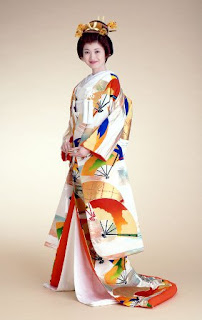10 world's most popular costumes
Most popular in World Traditional Clothing - Clothing traditionally a nation is to show the identity of the nation itself. Traditional clothing is also one of the nation's culture and be proud when traditional attire is also known by other countries. Here are 10 famous traditional clothing of the 10 countries in the world.
Ouchanka (Russia)
Ouchanka is a traditional Russian fur hat and Scandinavia, with hinged sides that can cover the ears and neck, or remain tied to the top of the cap.

Scottish traditional dress
Traditional Scottish dress is characterized by the use of a grid in a variety of forms. Clothing holds an important place in the culture of Scotland, and represents the breadth of Scottish culture throughout the world, primarily through the skirt.

Niqab (Middle East)
The niqab is a veil that covers the face except the eyes. The niqab is worn by some Muslim women, the hijab as an extension of fashion, especially in the Middle East, Asia, South East, North Africa and India.
Sombrero (Mexico)
Sombrero is a kind of hat that comes from Mexico. Sombrero generally has a fairly high on the head and has a wide edge, allowing users to protect themselves from the sun. The name is derived from the Spanish for the sinking shadows or darkness.
Jilbab (North Africa)
The hijab is a garment or robe long shirt-shaped, with or without a hat, traditionally worn by men and women in North Africa, the Arabian Peninsula and by some Muslims and Muslims, for cultural or religious reasons. If worn by women are usually equipped with a hood.
Kaftan (Persia)
Kaftan is a traditional Persian clothes. Kaftan is a long shirt or tunic with long sleeves and a wide, usually using lightweight materials like silk floating impressed. Now kaftan heavily modified with different variations such as embroidery, sequins or stone beads so impressed luxurious and elegant.
Kebaya (Indonesia)
Kebaya is a traditional Indonesian clothing that comes from the Malay culture (Southeast Asia). Many traditional clothing in Southeast Asia in countries like kebaya like Malaysia, Brunei, Singapore. Kebaya is a blouse (clothing boss) combined with a subordinate fabric, cloth is also worn traditional fabrics such as batik, songket. So it is not surprising that such manifold kebaya kebaya Javanese, Balinese kebaya, kebaya Sunda and others. Kebaya will look elegant, luxurious and classy when modified with embroidery, sequins, beads and more.
Cheongsam (Chinese)
Cheongsam is the traditional dress Chinese woman. Cheongsam is usually a long piece with a high neck, short-sleeved, buttoned shanghai on the left or bottom right shoulder. Cheongsam is usually brightly colored, red as a show of luxury and elegance but still looks simple.
Kimono (Japan)
Kimono is a traditional clothing of Japan. Before the advent of Western clothing in Japan, long kimono worn by women of all kinds of Japanese From formal wear to daily wear kimono in Japan by all women. Kimono is a traditional Japanese clothing, T-shaped and there is belt called obi.Kini kimono worn at special occasions, especially for special occasions.
Sari (India)
Sari is a traditional garment that is worn by millions of Indian women, who come from the era of 100 BC. Sari is one of the habits of the clothes are kept by the women in India and timeless. Sari is the width of the fabric to the size of approximately 20 m and a width of 5-6 meters. How to wear sari varies, and worn by region, caste, events, religion, etc..
Batik (Indonesia)
Batik is one way of making fabric. Besides batik can refer to two things. The first is the technique of coloring cloth using the night to prevent staining part of the fabric. In the international literature, this technique is known as wax-resist dyeing. The second notion is the fabric or clothing made with these techniques, including the use of certain motifs that have uniqueness. Batik Indonesia, as the overall engineering, technology, and development-related motives and culture, UNESCO has been designated a Cultural Heritage for Humanity Oral and Nonbendawi (Masterpieces of the Oral and Intangible Heritage of Humanity) since October 2, 2009.

Korean traditional dress called a Hanbok (North Korea called Choson-ot). Hanbok dress is divided into the upper (jeogori), pants for men (wedge) and skirt (Chima).
Korean people dressed according to their social status so that clothes are important. People with high status and royal family enjoys the luxurious clothing and jewelry that generally can not be purchased under the layers of people living in poverty.
Previously, classified Hanbok for everyday use, ceremony and certain events. Hanbok for ceremonial use in formal events such as birthday first child (doljanchi), weddings or funerals.
Today the hanbok is no longer used in daily activities, but at certain moments still used.
























No comments:
Post a Comment